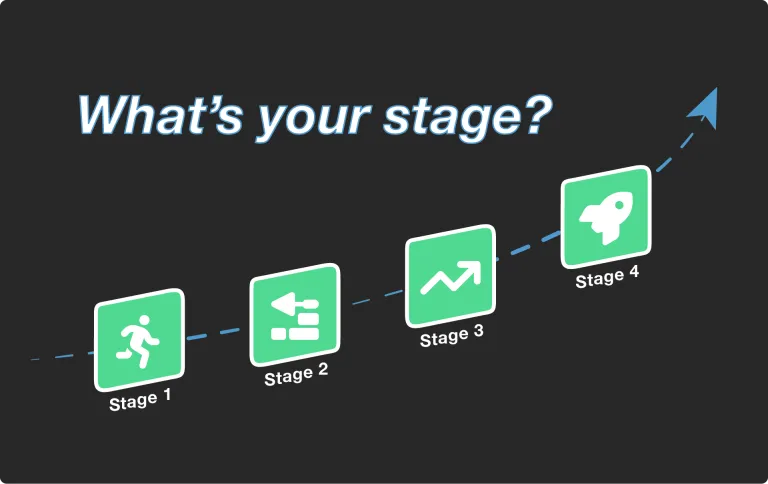A couple of friends recently asked me, “How can I turn something I use to make money on the side into my primary income?”
Now, full disclosure: I’ve run a lot of my own side hustles and I’ve worked with many small business owners to help them grow their businesses, but I’ve never taken the step of making one of my side hustles my primary source of income. I’m in the process of doing that now! But I have been reading everything I can find on the topic from other people who have done this successfully before, and I’ve distilled the most common advice from all of them into this issue.
If you want to join me in following those who have gone before, here are the top 10 things other successful entrepreneurs did before taking their side gig full-time.
- Build the habit of showing up every single day
- Work for yourself first
- Follow purpose, not just money
- Obsessively talk to your customers
- Focus on list building and selling a product
- Get clear on how much you need to live
- Pile up cash
- Keep expenses lean
- Set aggressive goals
- Wait for the boat to be close enough to the dock
Let’s jump right in.
1. Build the habit of showing up every single day
Every person I’ve talked to, listened to, or read agrees - making the jump was harder than they thought it would be.
The common ingredient for all of them is a radical commitment to lay another brick every single day. Consistently putting in the effort and the time, especially on the days you don’t feel like it. Because that’s what it’s going to take to maintain the business when you go full-time, too.
And don’t expect overnight success, either - getting ready to make the jump will take grit and determination over an extended period of time.
2. Work for yourself first
It’s uncanny how many successful entrepreneurs say the exact same thing - magic happens earliest in the day.
You might be an exception (but you’re probably not). Start early when you’re fresh and give your very best and brightest hours to focus with intensity on building your side hustle. Perhaps it’s the self-discipline that comes with this practice, but as they say, “the early bird gets the worm”.
Then, move on to your day job and give that all you’ve got left - your integrity demands it.
3. Follow purpose, not just money
You were created for a purpose.
Money by itself will not satisfy you for very long (although it certainly can be a powerful motivator). Folks who are successful over the long haul all agree that financial success by itself will not keep you motivated for very long in business. Instead, look for the overlap between your deepest passions and your greatest strengths.
Follow purpose and the money will follow.
Knowledge you think is obvious is worth $100,000+ to someone else.
— Justin Welsh (@thejustinwelsh) October 11, 2023
4. Obsessively talk to your customers
If you aren’t talking to your customers, then you’re guessing what they want.
And this one really is that simple. You may know your industry cold, but there is no substitute for actual conversations with the humans you want to serve. Even if you do know the industry, it’s always changing.
The only way to truly know your customers is to talk to them - before you make the jump.
5. Focus on list building and selling a product
Start simple by getting laser-focused on who you’re selling to and the problem you help them solve.
Then labor day in and day out to build up a list of customers who have that problem. And keep nurturing and selling to that list of potential customers. All the people I’ve studied say to start by selling a low-tech product that you can improve on quickly so that you develop a product people truly want.
If you nail this step, your business will be built for both present and future success, because that customer list can be sold to over and over again with new products over time.
6. Get clear on how much you need to live on
This is the first step in defining a reasonable financial target so that you can know when you’re ready to transition the side gig to full-time.
First, create a monthly budget that accurately reflects all the factors in your life - food, utilities, transportation… the whole picture. Next, take a hard look at that budget and ask yourself, “What’s the absolute minimum I need to earn each month?” Add 10% to that number, because you’ve probably forgotten something.
Now you’ve identified the minimum after-taxes income your side-hustle will need to be able to pay you once you go full-time.
7. Pile up cash
Building up a reserve of cash will function both as your personal emergency fund and as the “runway” you may need in order to get your side hustle producing at full capacity.
This might be one of the most difficult steps because it requires getting a bit creative with your current budget in order to stash up enough cash. Ultimately, you want to aim for 3-6 months of living and operating expenses. And no, don’t go take out a loan for this.
Be patient, because this will take time, but your side hustle will also become stronger here as you force it to grow and support itself by producing revenue.
8. Keep expenses lean
Entrepreneurs who succeed in taking their side gig full-time tend to be very adept at trimming down both personal and business expenses.
They’re particularly watchful for recurring expenses that can add up quickly. If they can get by without something or a less expensive something, they do it. Make every single expense justify itself - if you cannot explain how the expense will save you money or earn you more money, then it’s a candidate for pruning.
This practice is helpful for taking your side hustle full-time, but it’s also helpful for keeping it healthy once you have!
9. Set aggressive goals
If you aim at nothing, you will hit it every time.
All of the folks I looked at were tenacious to set aggressive goals for their side gig so that they could build it to a reasonable level before going full-time. Your goals should be ambitious, measurable, and time-bound. As you’re trying to transition the side gig to a primary source of income you should focus your goals on revenue, your sales funnel, or other financially-oriented metrics because that’s the primary criteria for going full-time with your business.
Your goals should also be steps toward a longer-term vision that will help set your business up for future growth.
10. Wait for the boat to be close enough to the dock
Don’t be impulsive!
Here’s a good rule-of-thumb for knowing when you’re ready to quit your day job and invest all of your time in your business: when giving all of your time and energy to your side hustle would cause it to meet your financial needs from (step 6)[#get-clear-on-how-much-you-need-to-live-on] above. For example: if you’re currently putting 10 hours per week into your side gig, you’ll be ready to make the jump when you believe that putting in 40 hours per week would cause the business to produce enough income to meet your budget. If you make the jump before the, you’ll put extra stress on your business and yourself, decreasing your chances of success.
Don’t jump too soon.
How this will make you money
What’s really great about most of the things on this list is that they will help you both before and after you make your business you primary source of income.
By doing these things while your business is still a side hustle, you’re building a stronger business. And you’re increasing the chances of transitioning with a profitable and stable business that lasts.
As it turns out, almost all of the ten things on this list are key practices to grow and operate a profitable business later, too. So, embracing these habits will help you to make a safer jump (saving you money) and will help you grow a strong and sustainable business (making you more money over time).
I get it - it’s really difficult to have the patience to wait. I’ve been there. I am there. Patience and endurance are the keys.
Set yourself and your fledgling business up for long-term success by waiting until it’s established enough to support itself and you.
To thriving,
Zach





